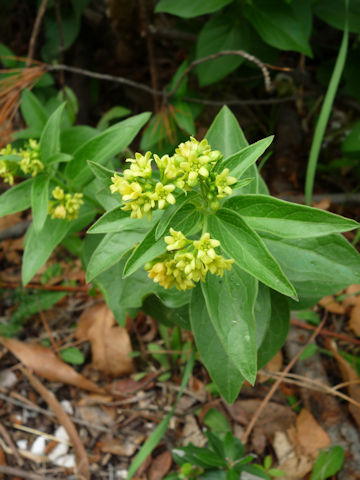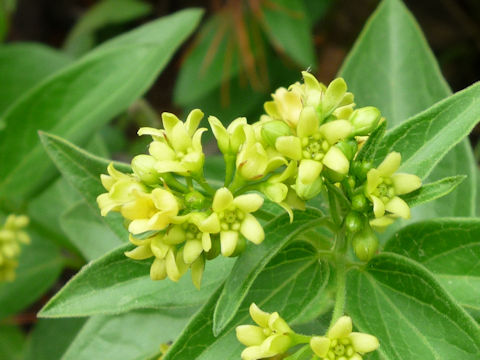 |




|

|
中国の北中部から南中部それにチベット自治区に分布しています。標高1000~5000メートルの高山の荒れ地や草地に生え、高さは60センチほどになります。茎は直立し、ふつう枝分かれをしません。葉は広卵形から長楕円形で、薄紙質で光沢があります。4月から7月ごろ、茎頂や葉腋に散形花序をだし、黄色から褐色または紫色の花を咲かせます。花冠は深く裂け、裂片は三角状卵形で肉厚です。根には利尿作用があり、鎮痛剤に用いられます。中国語では「大理白前(da li bai qian)」と呼ばれます。
|

|
ガガイモ科カモメヅル属の多年草で、学名は Cynanchum forrestii (syn. Vincetoxicum forrestii)。英名はありません。
|

|
The Cynanchum forrestii belongs to Asclepiadaceae (the Milkweed family). It is a perennial herb that is distributed in north-central to south-central China and the Tibet Autonomous Region. It grows in high mountainous terrain and grassland at elevations of 1000 to 5000 m, and grows to a height of about 60 cm. The stem is erect and usually unbranched. From April to July, it produces umbels at the top of the stem or in the leaf axils, and produces yellow to brown or purple flowers. The corolla is deeply lobed and the lobes are triangular-ovate and thick-fleshed. The root has diuretic properties and is used as an analgesic. In Chinese, it is called "大理白前" (da li bai qian).
|

|
クロアチア・ドゥブロニク「ロクルム島」にて、2012年05月03日撮影。(photo by Aya Suehiro)
|

